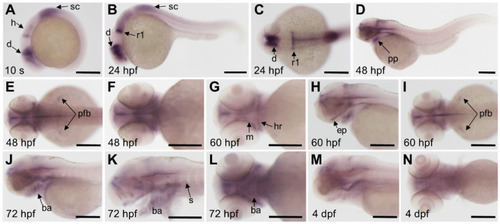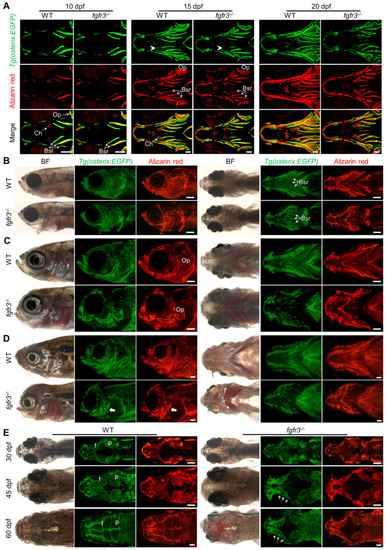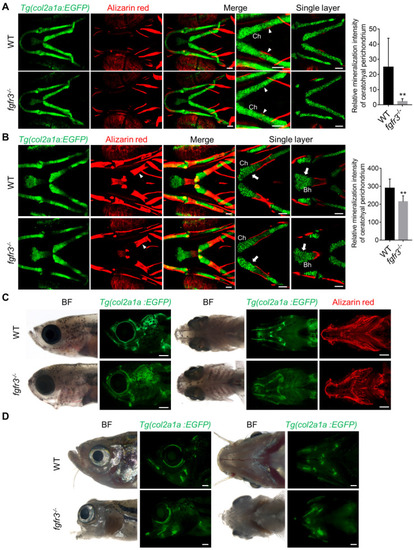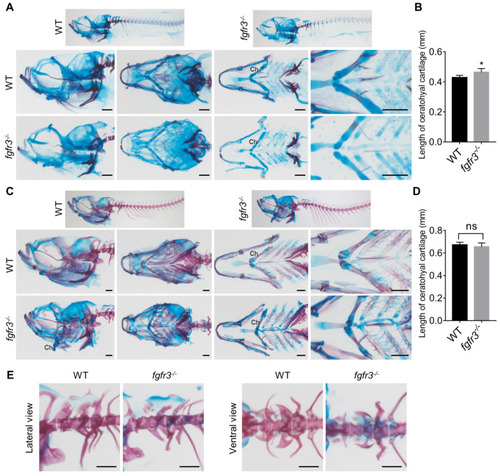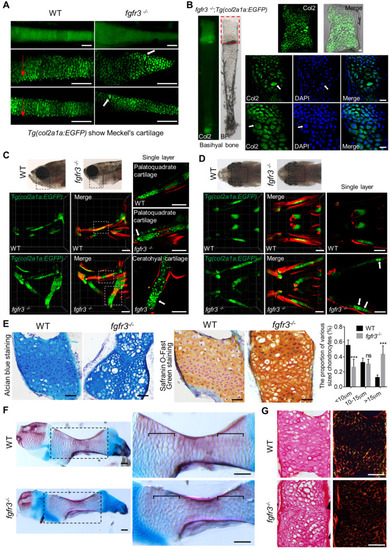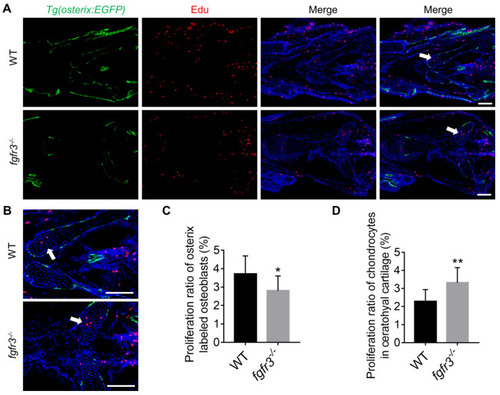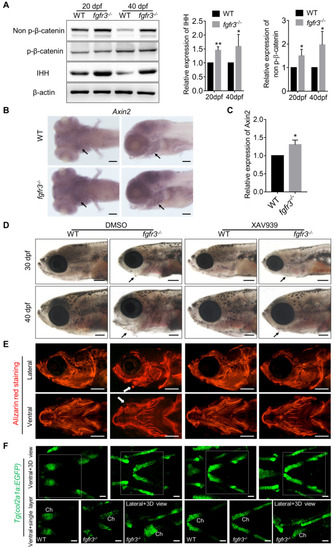- Title
-
Fgfr3 mutation disrupts chondrogenesis and bone ossification in zebrafish model mimicking CATSHL syndrome partially via enhanced Wnt/β-catenin signaling
- Authors
- Sun, X., Zhang, R., Chen, H., Du, X., Chen, S., Huang, J., Liu, M., Xu, M., Luo, F., Jin, M., Su, N., Qi, H., Yang, J., Tan, Q., Zhang, D., Ni, Z., Liang, S., Zhang, B., Chen, D., Zhang, X., Luo, L., Chen, L., Xie, Y.
- Source
- Full text @ Theranostics

ZFIN is incorporating published figure images and captions as part of an ongoing project. Figures from some publications have not yet been curated, or are not available for display because of copyright restrictions. PHENOTYPE:
|
|
|
|
EXPRESSION / LABELING:
|
|
EXPRESSION / LABELING:
PHENOTYPE:
|
|
PHENOTYPE:
|
|
|
|
PHENOTYPE:
|
|
PHENOTYPE:
|
|
PHENOTYPE:
|
|
EXPRESSION / LABELING:
PHENOTYPE:
|
|
|


